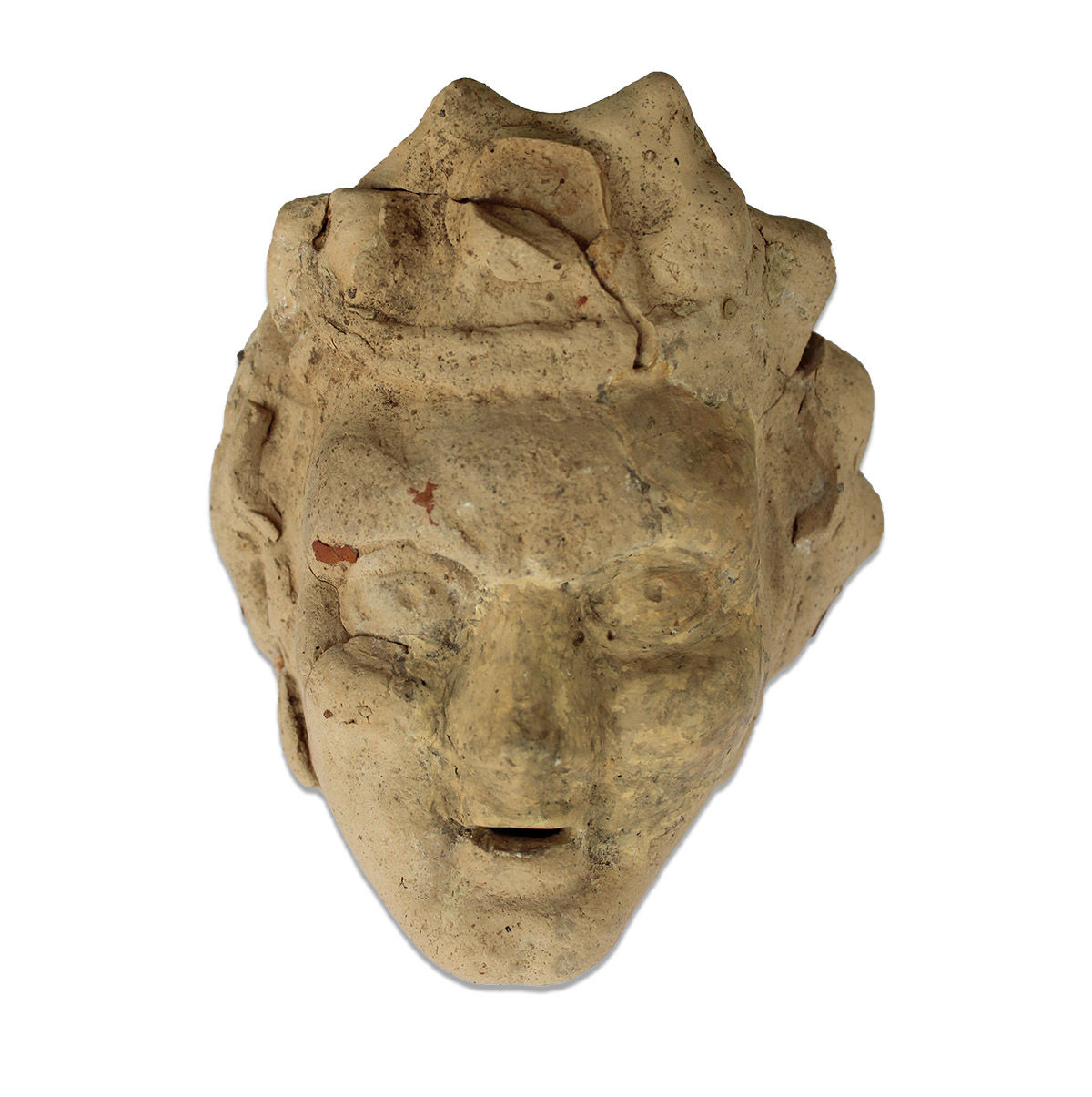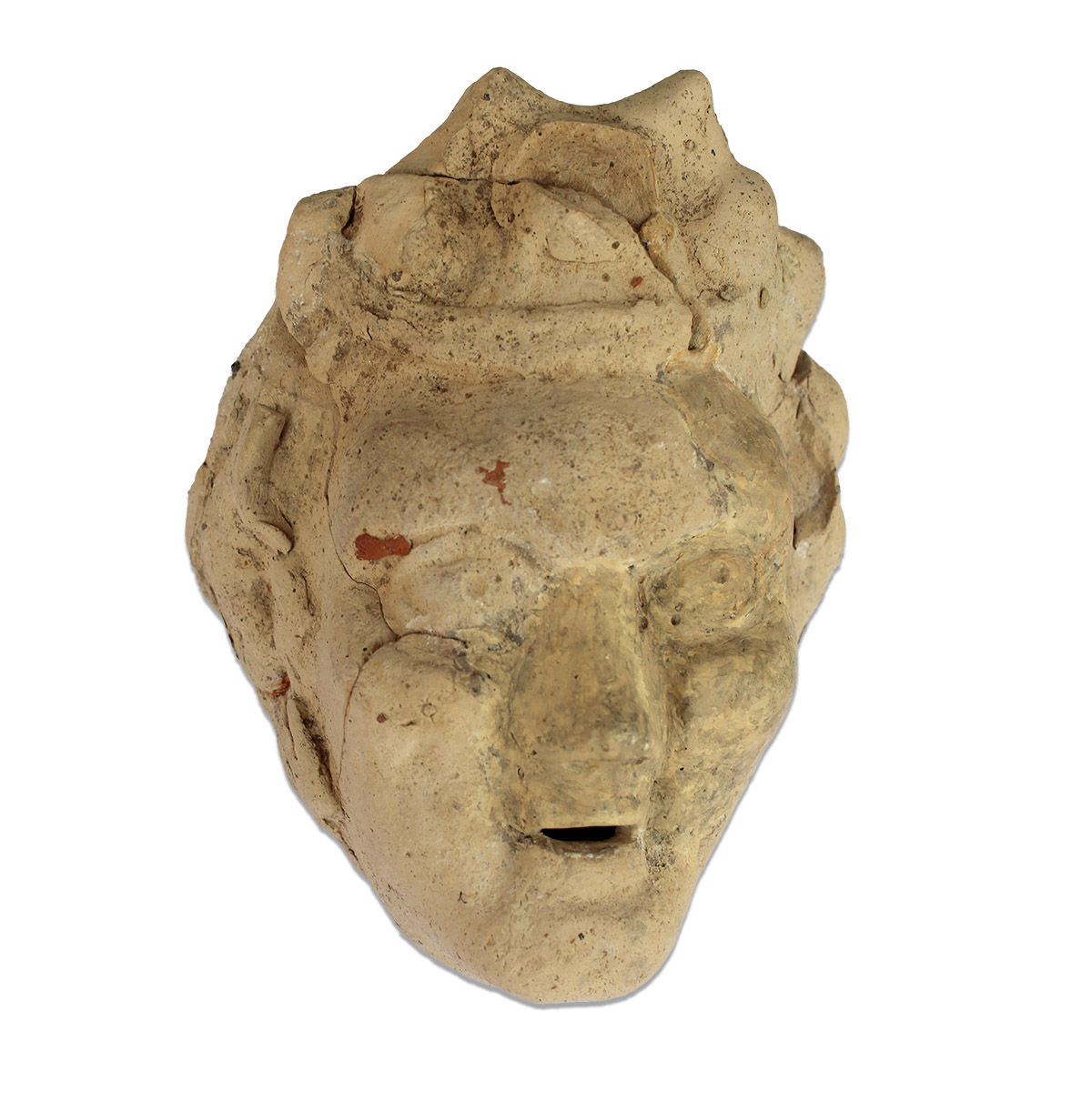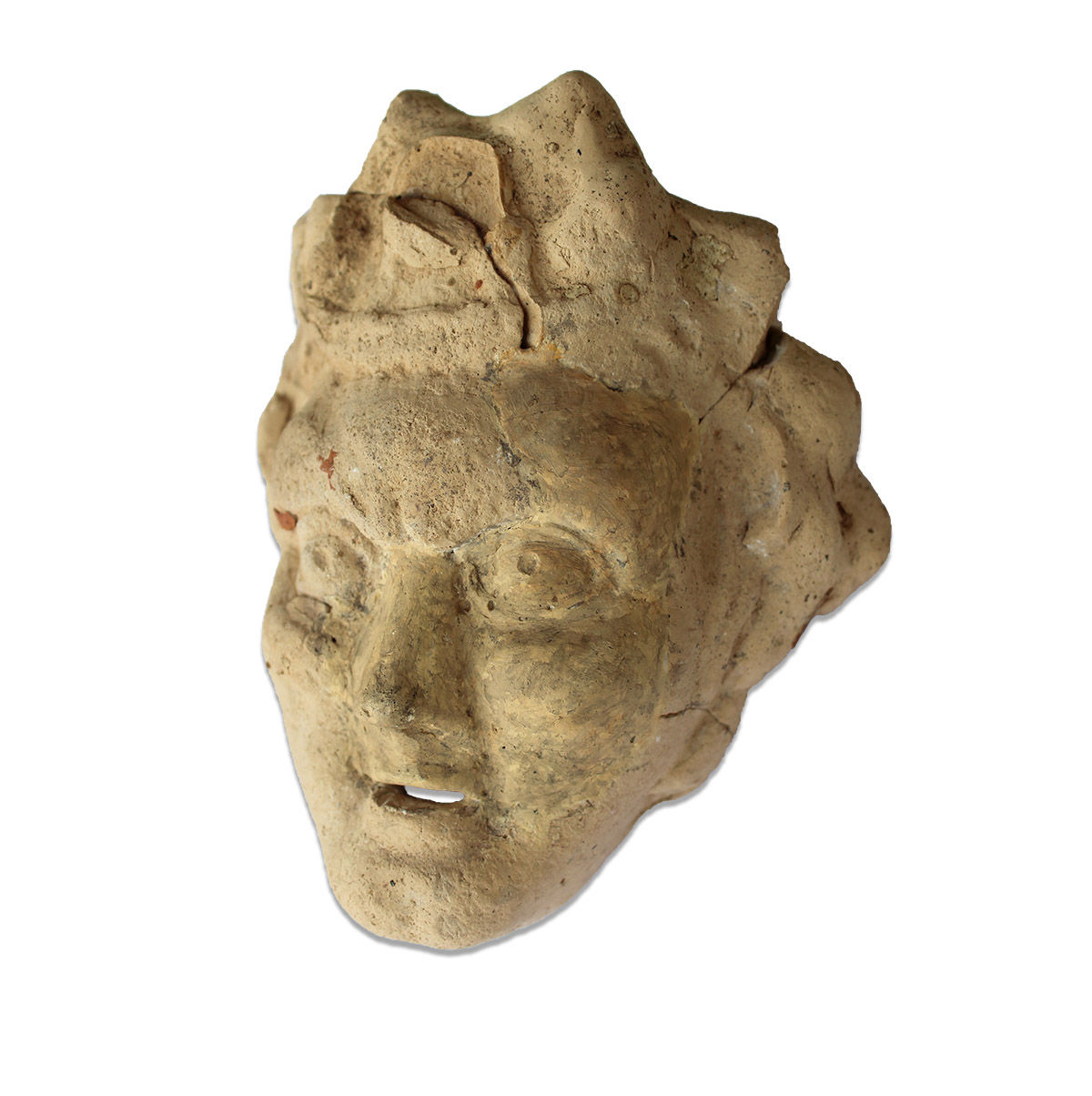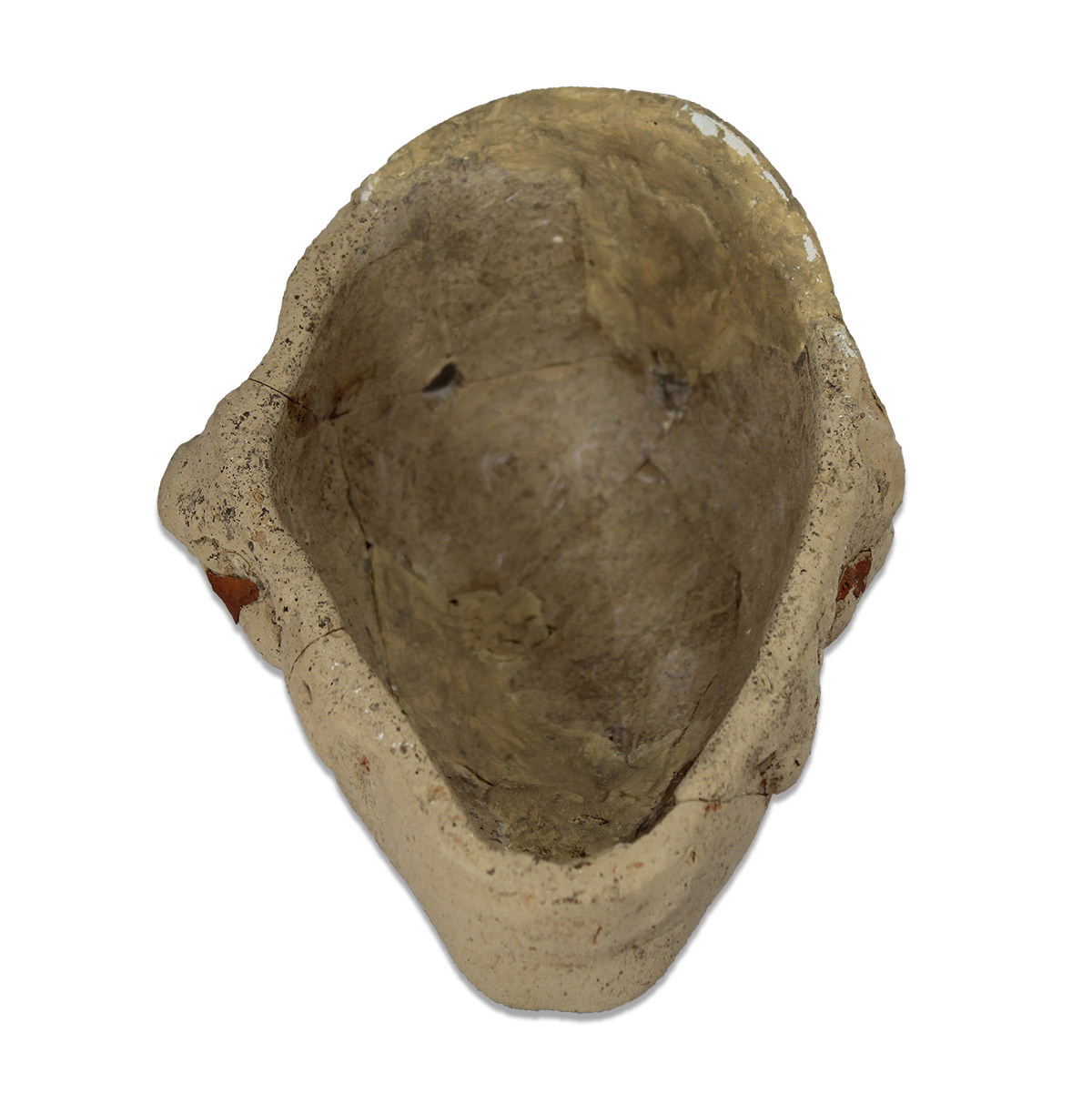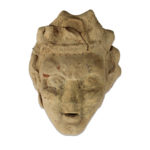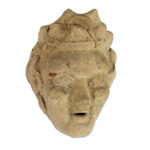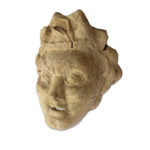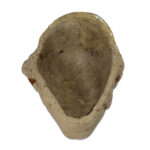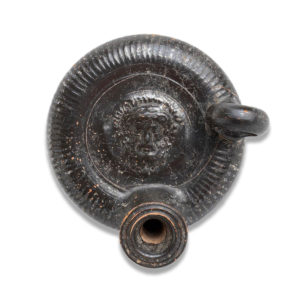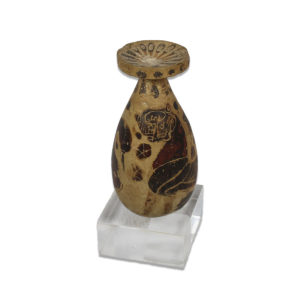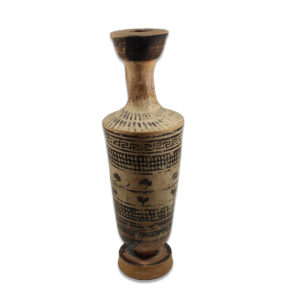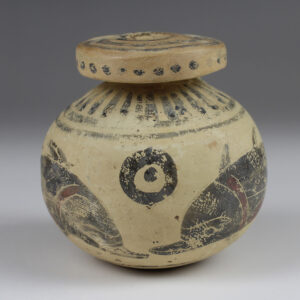Description
| ITEM | Mask of youthful satyr |
| MATERIAL | Terracotta |
| CULTURE | Greek, South Italy, Hellenistic Period |
| PERIOD | 2nd – 1st Century B.C |
| DIMENSIONS | 130 mm x 110 mm |
| CONDITION | Good condition, restored |
| PROVENANCE | Ex English private collection, acquired before 2000 |
| DESCRIPTION | Large lidded eyes, exaggerated arching brows, open mouth, hollow to the interior, and rounded dimpled chin, the curly hair bound by fillet, with two short curving horns emerging, and attachment hole either side of central berry |
| BIBLIOGRAPHY | BONHAMS. Antiquities auction (5 Jul 2018) Lot 22 |
Satyr masks were an integral part of Hellenistic theater, particularly in satyr plays that accompanied Greek tragedies. These masks were crafted to represent satyrs, mythological creatures with the lower bodies of goats and the upper bodies of humans. The masks featured exaggerated features, such as elongated ears, snub noses, and prominent beards, creating a humorous and somewhat grotesque appearance. The upper half of the face retained human features with expressive eyes and open, jovial mouths. Made from materials like terracotta, wood, or leather, these masks allowed actors to effectively portray satyrs, conveying their playful and uninhibited nature during performances. Satyr masks served both as tools of theatrical expression and as symbols of the untamed aspects of human nature, offering social commentary and cultural insight in the context of Greek drama.


